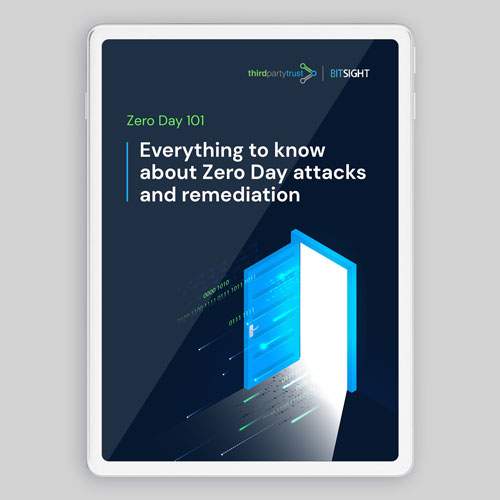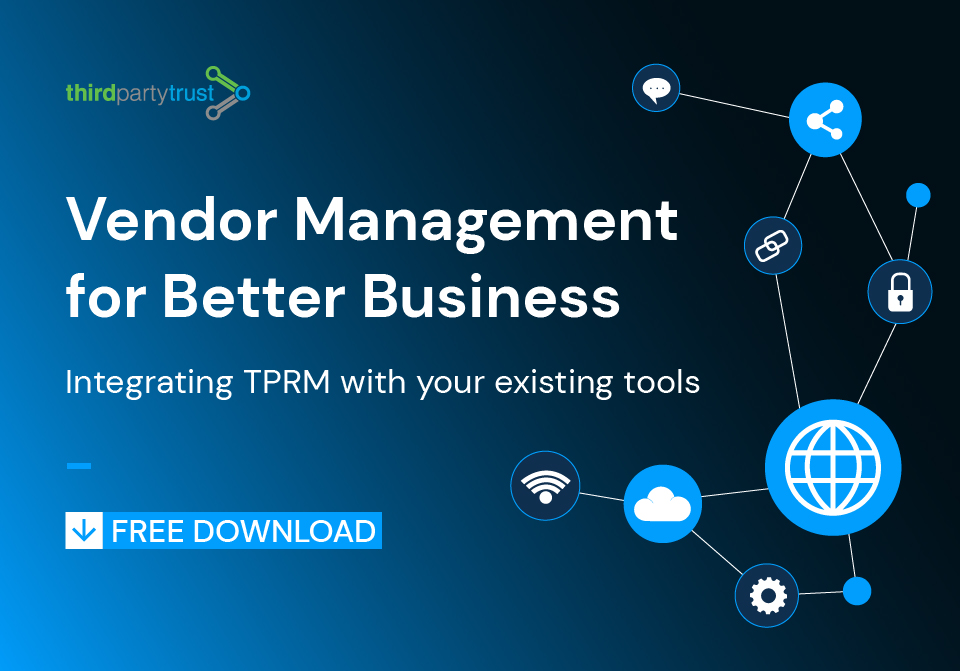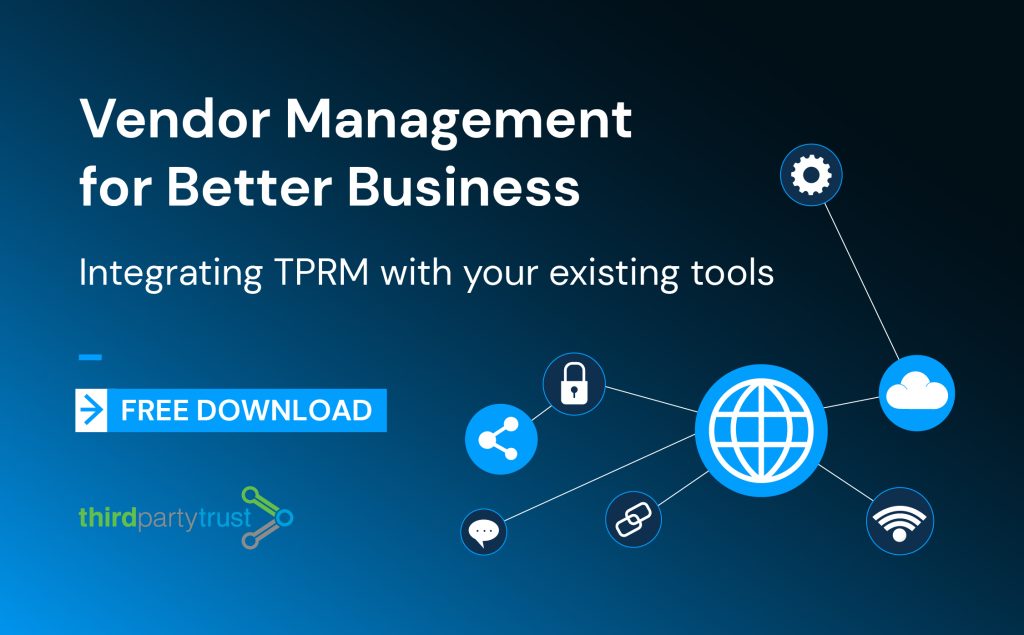TPRM integrations: Using vendor risk data in your business decisions
Regardless of the maturity of your third party risk management (TPRM) or vendor risk management (VRM) program, you are likely using a tool to perform third party risk assessments and vendor due diligence. Did you know TPRM integrations can expand the outcome of your assessments by integrating your vendor data into other business apps? Even your tool is a custom-made spreadsheet?
When it comes to vendor management, TPRM integrations allow you to use vendor risk assessment findings and insights in executive decision making and enterprise risk management (ERM) or GRC processes.
It’s about bringing different applications together to operate smoothly without interfering with each other or demanding additional efforts from users, so that data can flow seamlessly and uninterruptedly.
Our latest ebook dives into 5 types of TPRM integrations that will save you time and money:
TPRM and GRC tools
TPRM and ticketing tools
TPRM and business analytics tools
TPRM and continuous monitoring tools
TPRM and managed services
The vendor data you can pull from your TPRM tool includes inherent risk, scope of services, GDPR requirements, questionnaires and certifications, contracts, integrations, history of data breaches, and more. All of this can be exported to trigger different processes across your organization.
Whether it’s deciding to engage with a new vendor or not as part of the due diligence process, or detecting security issues along the way, vendor risk findings and Key Risk Indicators (KRI) from your TPRM tool can trigger tasks and processes to streamline risk remediation. As described in our ebook, integrating your vendor management with GRC, ticketing, or business analytics tools, or even outsourced managed services, can prove to be highly effective.
What are the benefits of integrating your TPRM software with other business apps?
Increasing overall productivity — Cut the time spent on repetitive actions across applications and minimize errors, thus increasing your company’s productivity.
Getting better data to make decisions— Vendor assessment findings provide a holistic understanding of risk and allow for data-driven risk management decisions.
Lowering Operational Costs— Cut maintenance costs significantly, simplifying and automating processes across systems and avoiding unnecessary downtime.
Companies are realizing that good security is good business. As a result, embracing new technologies to become more collaborative, efficient, and competitive means that integrating business tools is a smart, logical next step.
Leveraging system integrations with ThirdPartyTrust
Many businesses still rely on processes that require employees to toggle different platforms, thus increasing workload and risk of error as data points are copied from one source to another.
As seen through the use cases described in our ebook, integrations can cut down the time spent on repetitive actions, simplify processes, and increase visibility for third party risk managers to prioritize issues accordingly.
In our case, our TPRM automation tool, ThirdPartyTrust, offers fully accessible API so your third party risk assessment data can be integrated into a wide variety of systems, including:
- GRC tools like ServiceNow or RSA Archer
- Ticketing systems like JIRA or ServiceNow
- Reporting solutions such as Power BI or Qlik
- Continuous monitoring solutions such as BitSight or RiskRecon
- Managed services providers such as GuidePoint Security or Optiv
Additionally, our team can help you build any other custom integration you need through our open API.
Third party risk management can often be seen as a nice-to-have, or as necessary insurance. But by leveraging TPRM’s ability to integrate with several business apps, companies can add data points to build out appealing, robust, and secure business plans.
Are you ready to explore the system integration options ThirdPartyTrust has to offer?

Don’t let zero days be “wake up calls.”
Unpredictable vulnerabilities will be an ongoing concern for security teams inthe foreseeable future.
In this guide you will learn the fundamentals of zero days, patterns from our statistical analysis, and tips to reduce risk and remediate zero days if/when they happen.





